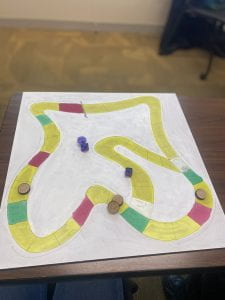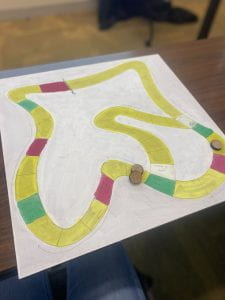Description/Pitch
“Whistle” is a mystery RPG where the player plays as a new temp worker at a corporate national bank, Dolion Bank. Working from home, uses the team collaboration application “Whistle” (very parallel with Microsoft Teams or Slack) player quickly gets onboarded to the team and starts doing their daily tasks. As they do these mundane tasks, however, they are exposed to a multitude of interesting pieces of information that suggest that Dolion Bank is not as legitimate as they make themselves seem. Through talking with clients, digging through company archives, and searching the internet, the player is presented the opportunity investigate exactly what is going on at this shady corporation. However, with a need to work enough to make a livable income and a boss constantly monitoring checking for a “Online” Whistle activity status, this will not prove to be an easy task.
** This is a large progress that is a work in progress so the game linked below is more of a rough prototype than a finished product **
Documentation
Rough Twine Prototype: https://drive.google.com/drive/folders/1NBDlTeWiTItazTCyZeiAQBA3abjrk9AF?usp=drive_link
Artist’s Statement
“Whistle” is an evolving project aimed at immersing players in an environment where they bear witness to the pervasive presence of corruption. As a work in progress, the prototype submitted is just a glimpse of the expansive narrative and gameplay mechanics that will be further developed in the future.
The game invites players to step into the shoes of a new temp worker at Dolion Bank, a corporate giant rife with secrecy and deception. Through dynamic storytelling and interactive gameplay, “Whistle” confronts players with ethical dilemmas and moral complexities inherent in confronting corruption within the workplace.
Through “Whistle,” I want to prompt the challenge players to question their own beliefs and perceptions surrounding labor ethics, corporate misconduct, and what it means to “speak up” about what may be going on in one’s workplace. By presenting players with difficult choices and complex scenarios, the game aims to foster a deeper understanding of the challenges faced by whistleblowers and the bravery of their actions.
My main inspiration for this game is the public reactions to various whistleblowers in recent years (ex. NYT article speaking against the Trump’s conduct while he was in office) and how some people called the authors of these information leaks “cowards” because they didn’t speak up sooner or attach their name to the article. As a previous member of PSA/HOWL (students orgs focused on labor organizing and labor justice), I felt that these attacks were gravely misplaced and that people may need to be educated more about how corrupt workplaces make it significantly difficult to do what “should be done.”
As development progresses, “Whistle” will continue to evolve, offering players a rich and immersive gaming experience that explores the intricacies of workplace corruption and the profound impact of individual actions on society as a whole. Through its exploration of timely and relevant themes, “Whistle” aims to inspire positive change and foster a greater sense of awareness and accountability among players.






